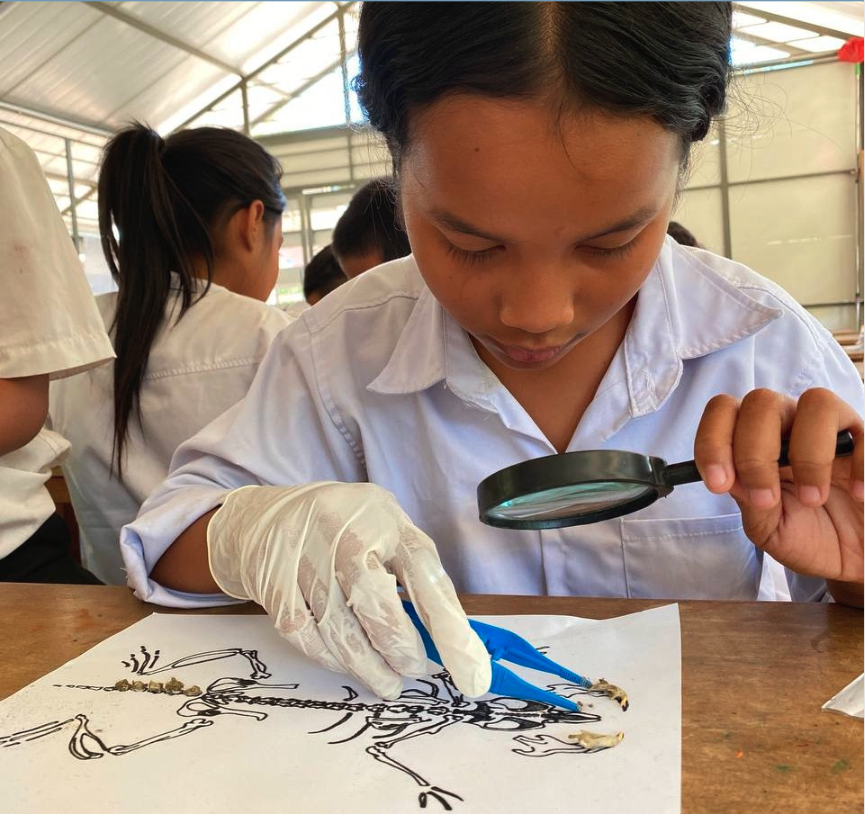
The PLF model works because we address both the “push” and the “pull” to school. We provide the necessary supports to push kids to school (bicycles, food, uniforms & supplies). But, we also need to “pull” them in – make them *want* to be there and *want* to learn – against all the environmental factors pulling them away from school. And we accomplish that through a variety of extracurricular activities, one of which is our Science Club.
NEW SCIENCE CLASSES & CURRICULUM
When we first explored piloting a science club at Knar, we started by examining the government science curriculum. The first thing we noticed is that the curriculum is extremely Cambodia-centric. The food chain, the environment, and husbandry are relevant to students across the globe, but the government curriculum confines these topics within a strictly national scope. It’s pragmatic, but it limits our students’ worldview to the point of isolation. Most of us grew up learning about polar bears, even though we’ll likely never encounter a polar bear or any arctic animal outside of a zoo. Why shouldn’t Cambodian students learn the same?
The textbook also turns to human anatomy, a brief section on physical science, four pages on constellations, and a lone page on outer space. But how can you learn about the digestive system without a basic understanding of cells or muscles? How can the solar system and the Earth’s rotation fit onto one page? The second thing we noticed is that there is no interactive learning. The government teachers write on the board, the students copy it down, and much of this comes as an afterthought to the reading, writing, and math that are a part of every class. The fun of predicting, testing, and getting messy isn’t a part of these classes, largely because the schools don’t have the lab spaces, materials, or teacher training to make it happen.
New Science Classes for Middle School
With fun activities that spark curiosity of how the world works!
We worked with staff, volunteers, and teachers to refine our three-part science curriculum: Biomes (including outer space), Human Anatomy, and Physical Science. Each unit is full of activities and experiments so our students can learn science in a more interactive and hands-on way.
We’ve also added field trips where possible, such as a visit to the new Angkor Wildlife & Aquarium on the outskirts of Siem Reap, where students’ growing curiosity about the natural world around them is sparked alive by coming up close with animals and marine life. And special projects with long-standing volunteers, such as Joan Turley, an experienced cartographer, who shared her knowledge and expertise with our team, who then led the students in making maps of their schools. For most students, the concept of mapping is fairly mind-blowing, and the process exercises not only their math and geography skills, but also analytical thinking. They also get to use compasses for the first time, and creative design in completing the final product. All in all, a super engaging activity.
EXPANDING OUR REACH
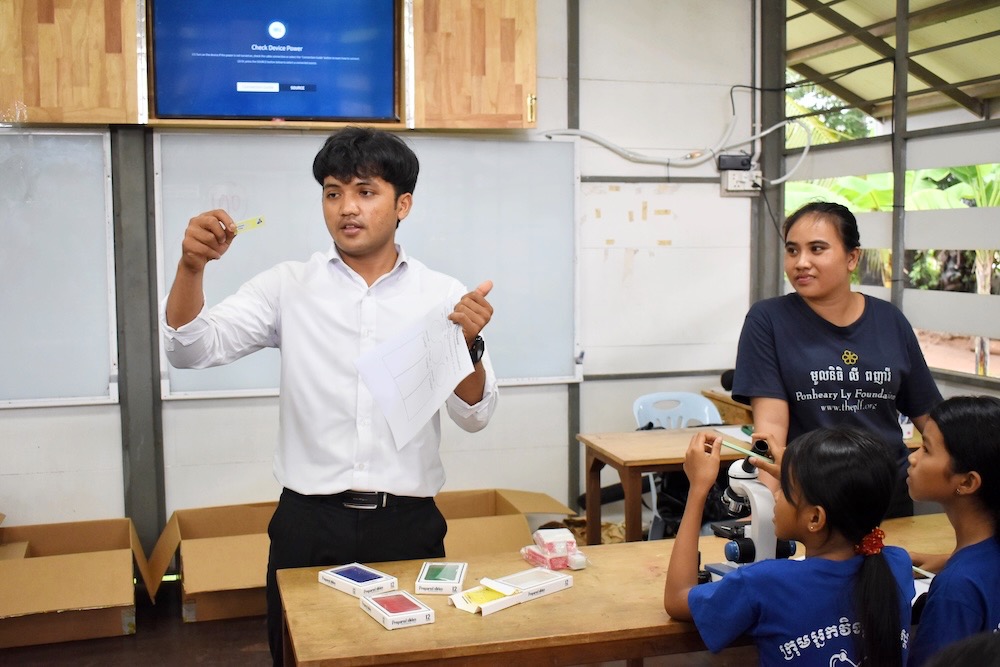
Pich (right) shadows Ravuth (left) during a microscopes class at KVLC
During the pilot phase at KVLC, Ravuth was lead teacher, with Pich shadowing him. Now that he has returned to Preah Vihear, Ravuth is teaching the curriculum to students at Srayang Learning Center; while Pich is doing an excellent job with continuing the classes at KVLC. This means DOUBLE the number of students are now getting to experience their world in new ways and deepen their understanding of the basic scientific principles of their lives – and we couldn’t be more thrilled.
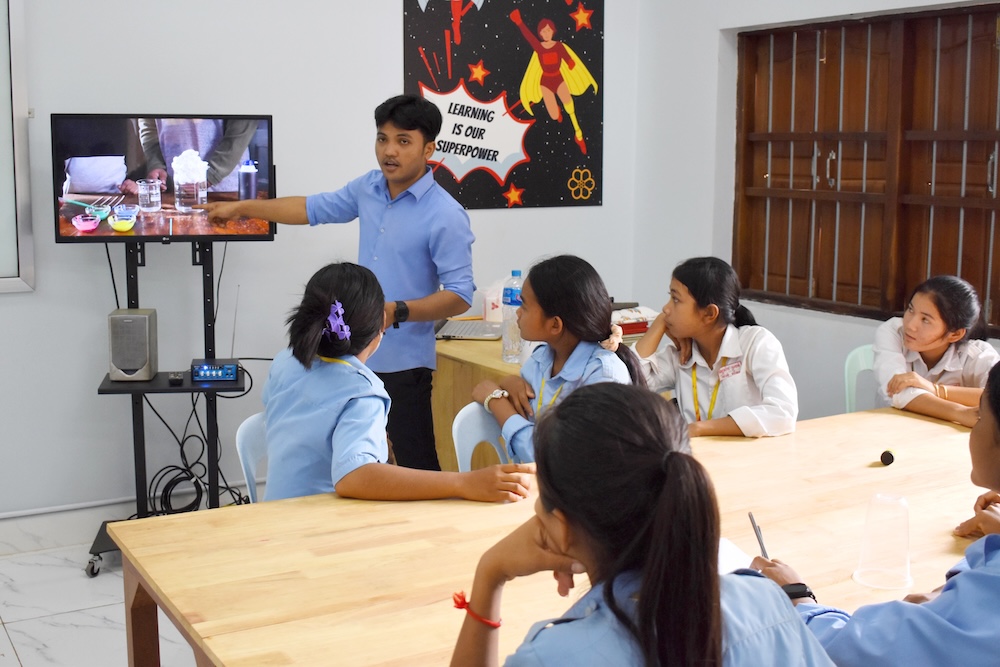
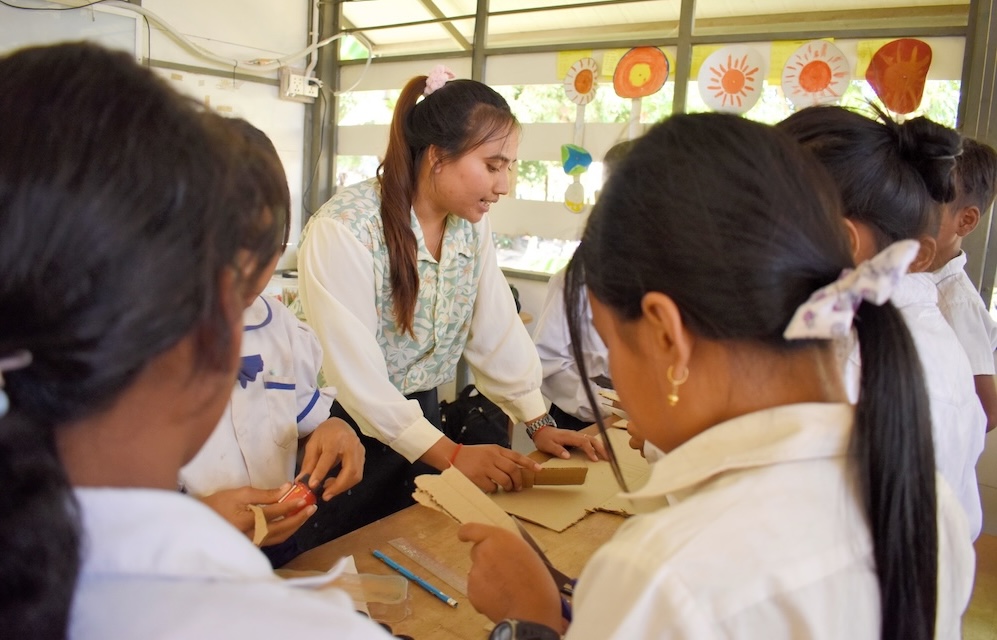
Ravuth’s classes are bringing science to SLC for the first time, while Pich is hitting her stride at KVLC
WHY IS SCIENCE SO IMPORTANT?
Cambodia needs more students choosing the science track in Grade 12 and more entering the STEM workforce. Cambodia’s own development goals recognize that the country’s future and an individual’s best career options lie in STEM fields (Ministry of Education, 2016). Our focus on all things STEM begins very early on through things like Chess Clubs and eReaders, via Tech courses, and, of course, Science Labs. In high school, we are doing more to encourage students into the science track for Grade 12. And currently, 66% of our University Scholarships are for STEM subjects. Meet some of our uni students leading the way!
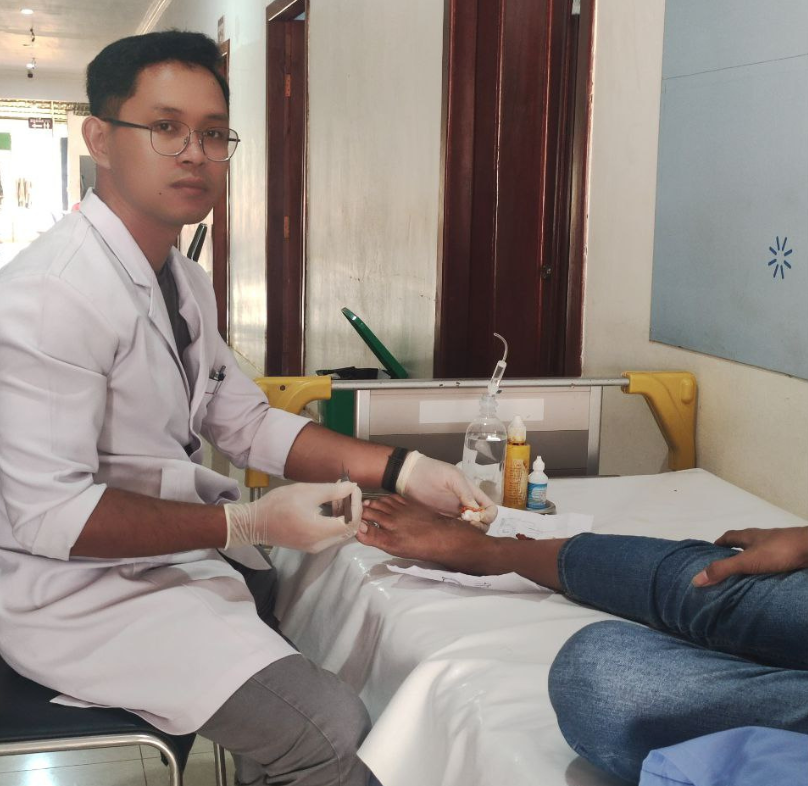
SOY SEN – PLF’s very first medical graduate, now working as a GP in Siem Reap
“Becoming a doctor was a dream since I was a child. I remember, I had a health problem when I was small, when my family worked as farmers in the deep forest. One day, I got a serious fever 40.2C with seizure. My father took me to the health center and they said they cannot help me and transfer to another hospital, but my father did not have enough money and the hospital was so far. Then he took me to my uncle’s house. My uncle was an old nurse in the Khmer Rouge genocide. He gave me injection serum and some analgesic drugs. I am proud of my uncle for rescuing my life, and I promised myself I would become a doctor, so I can treat myself and my family.
My first year in medical school was very challenging and hard to learn, but I never gave up, I always got up in the morning, working late night at the hospital, spending a lot of time studying then very exhausted the next day.
My journey was long and difficult. But I can achieve my dream and make it come true. Start from today, I can do good for my country and my family with dignity. I can help my community, provide good health service and quality of life for my people.
If I did not have support from PLF, I think my life would never change until today. When I look back, I was just a poor young boy, a dead soul in poverty, starvation and homelessness. I felt hungry and my brain not working properly and unknowledgeable.
𝙁𝙤𝙧 𝙢𝙚, 𝙨𝙘𝙝𝙤𝙤𝙡 𝙞𝙨 𝙚𝙫𝙚𝙧𝙮𝙩𝙝𝙞𝙣𝙜. 𝙏𝙝𝙧𝙤𝙪𝙜𝙝 𝙚𝙙𝙪𝙘𝙖𝙩𝙞𝙤𝙣, 𝙮𝙤𝙪 𝙬𝙞𝙡𝙡 𝙨𝙚𝙚 𝙩𝙝𝙚 𝙙𝙞𝙛𝙛𝙚𝙧𝙚𝙣𝙘𝙚 𝙛𝙧𝙤𝙢 𝙮𝙤𝙪𝙧 𝙥𝙖𝙨𝙩 𝙡𝙞𝙠𝙚 𝙢𝙚. 𝙀𝙙𝙪𝙘𝙖𝙩𝙞𝙤𝙣 𝙞𝙨 𝙩𝙝𝙚 𝙢𝙤𝙨𝙩 𝙞𝙢𝙥𝙤𝙧𝙩𝙖𝙣𝙩 ‘𝙢𝙚𝙙𝙞𝙘𝙞𝙣𝙚’ 𝙩𝙤 𝙧𝙚𝙖𝙘𝙝 𝙖 𝙗𝙧𝙞𝙜𝙝𝙩 𝙛𝙪𝙩𝙪𝙧𝙚. 𝙄 𝙘𝙖𝙣 𝙪𝙥𝙙𝙖𝙩𝙚 𝙢𝙮 𝙠𝙣𝙤𝙬𝙡𝙚𝙙𝙜𝙚 𝙩𝙤 𝙞𝙢𝙥𝙧𝙤𝙫𝙚 𝙝𝙚𝙖𝙡𝙩𝙝 𝙞𝙣 𝙢𝙮 𝙘𝙤𝙪𝙣𝙩𝙧𝙮, 𝙢𝙮 𝙘𝙤𝙢𝙢𝙪𝙣𝙞𝙩𝙮 𝙖𝙣𝙙 𝙛𝙤𝙧 𝙢𝙮𝙨𝙚𝙡𝙛.”
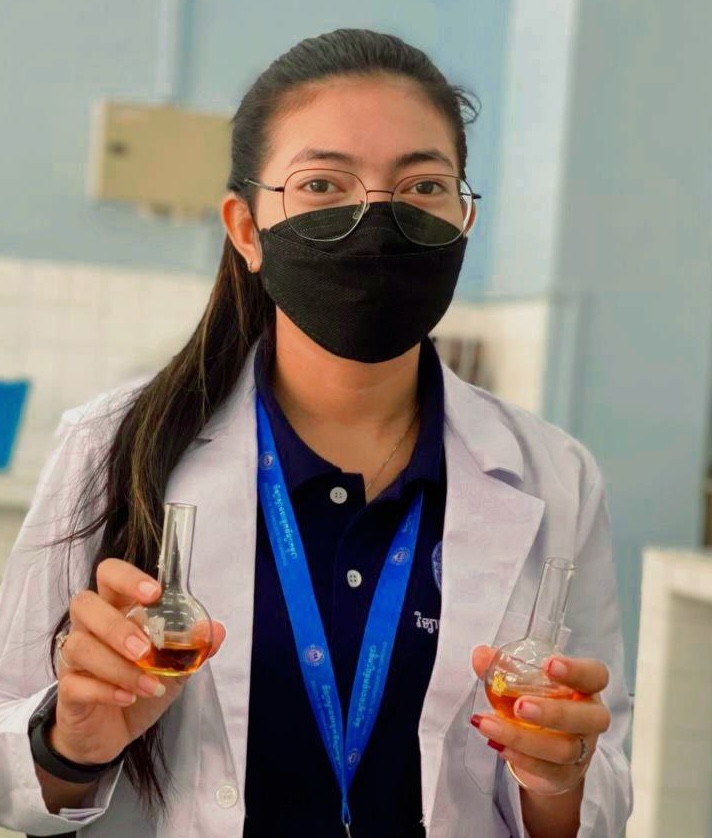
KONG KEO – Food Chemistry, Institute of Technology
“I chose to study this subject because food is very important for our lives, but to get good food to eat for us to be healthy, we should keep it properly and use it properly, so I was curious and eager to learn this skill. My favorite part is food preservation because it shows us how to store food properly, including temperature and duration.
STEM subjects are best for Cambodia to help develop the country. In the future, I want to be a QC inspector in the food production chain. My job will help all Cambodians get good quality food that does not affect health and does not pose a health risk in the future.”
As we expand our classes, we require more and more materials for the activities and experiments. Would you like to help encourage more students to find their inner geek?
Donate to our Science Materials campaign
Or consider Becoming a Recurring Supporter
For as little as $10 a month, you could contribute to the ongoing education of our students. $120 goes a long way in Cambodia: that’s 5 village children on the road to education, with access to school and clean drinking water for half a year. Or a million other things, all of which coalesce into the tools needed for life to change for the better!
Follow our Instagram or Facebook accounts. Like, comment on or share our posts – Do it. It’s free. And it’s a huge help for us!
Have some questions?
Email us for a chat at [email protected]

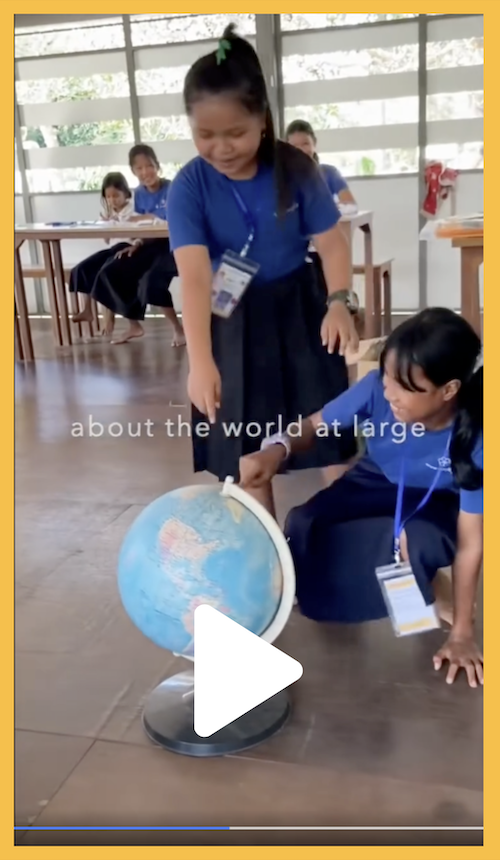
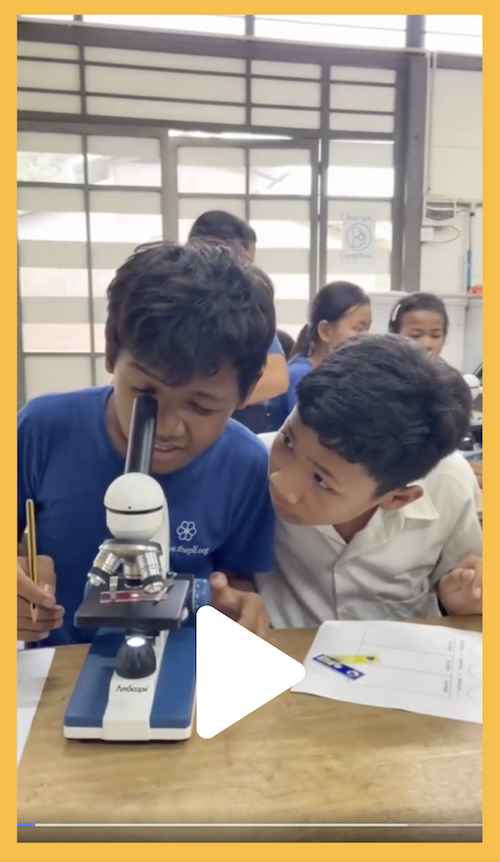
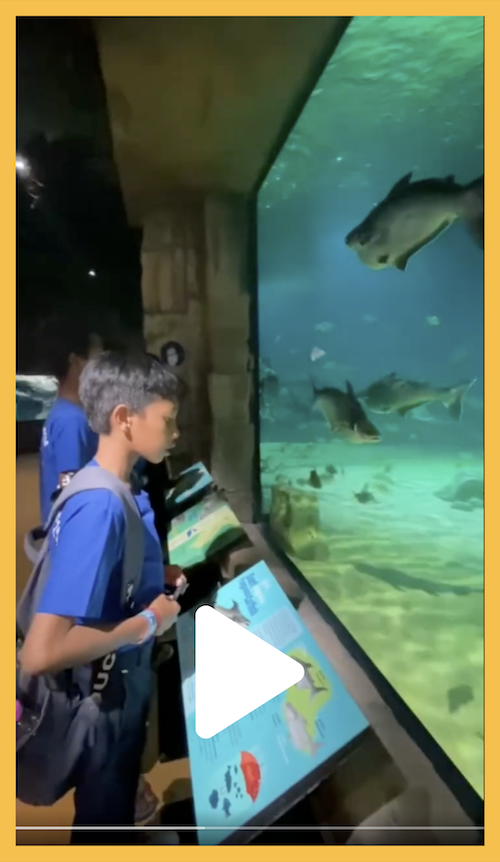
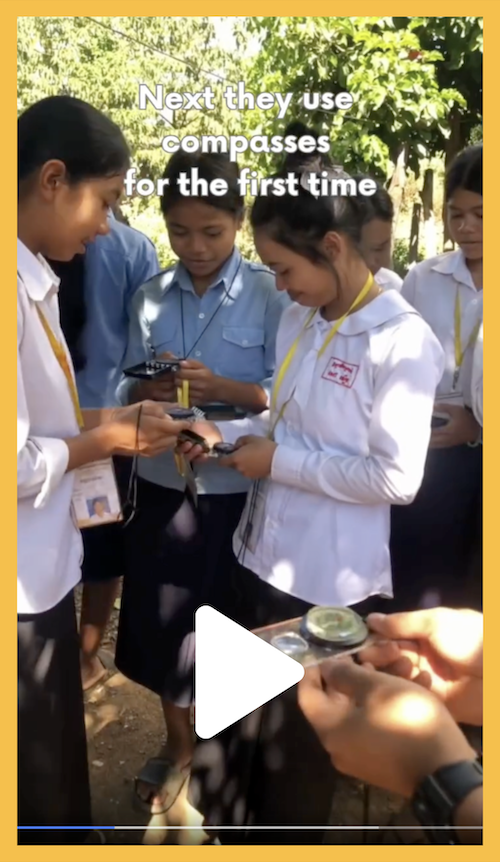
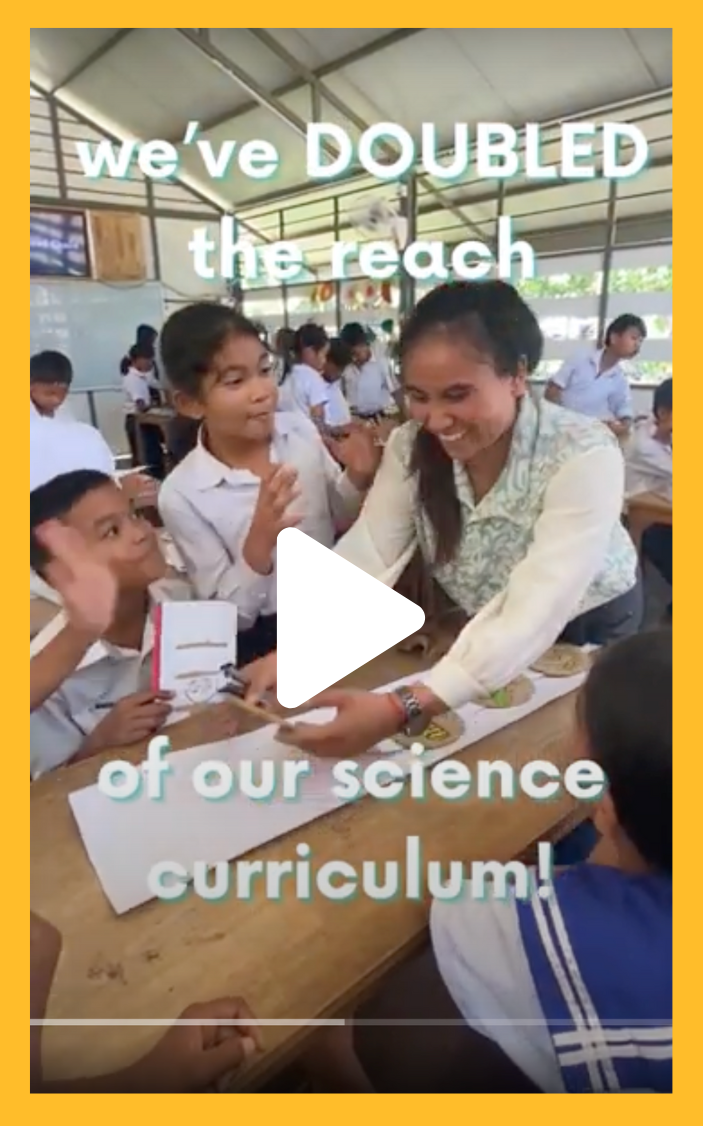
Recent Comments